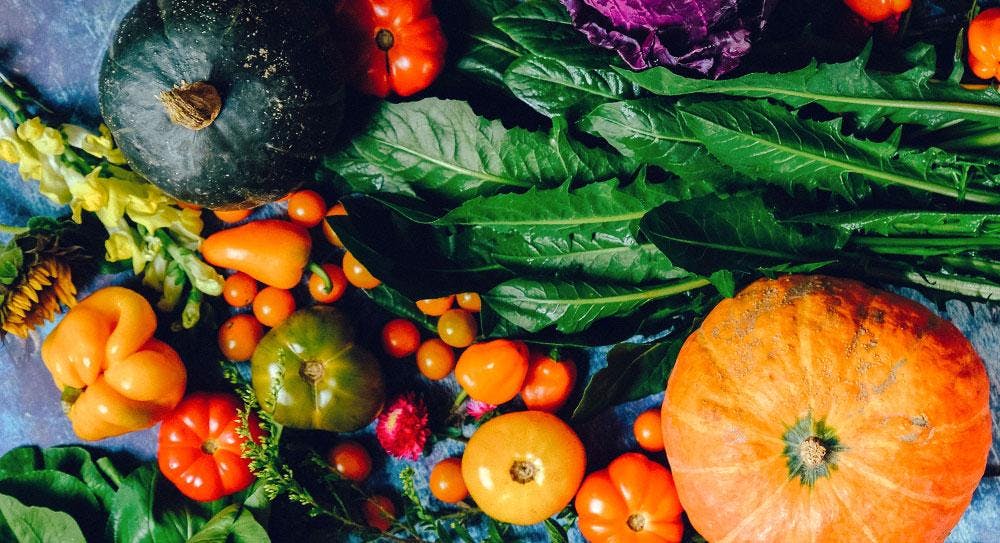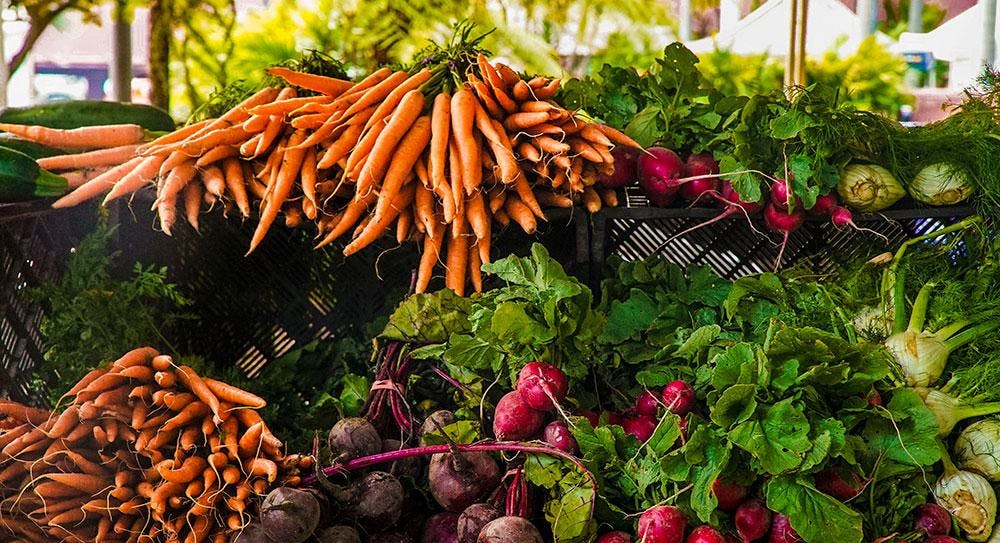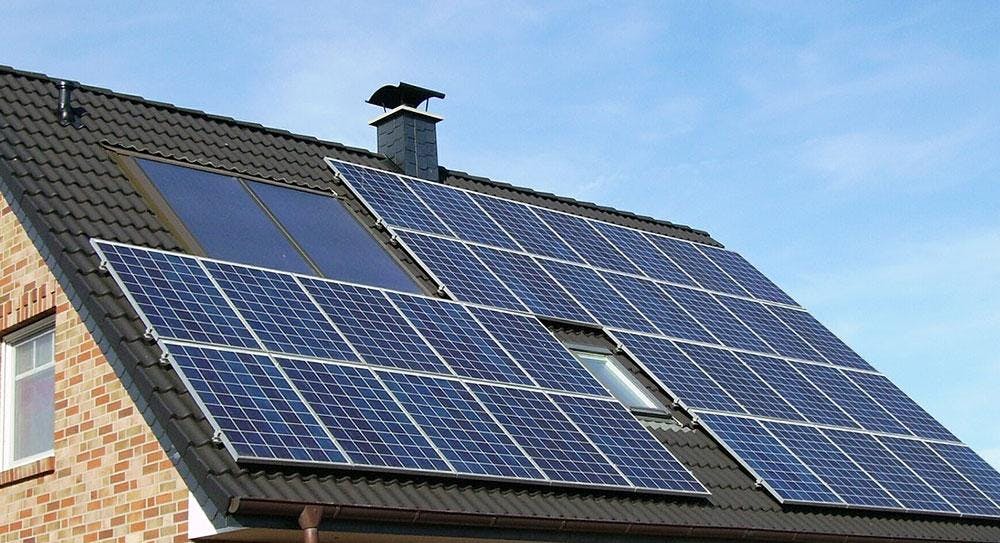Lifestyle
11 Ways to Reduce your Carbon Footprint
10min read
In the face of the current climate emergency, it can be hard to know what to do; scary situations — especially ones this large — often activate our fight or flight response but they can also make us freeze. This is no time to be caught in the headlights. The reality is that the average person in the UK has a carbon footprint of around 15 tonnes. In order to be considered ‘sustainable’ our individual footprint needs to be around 5 tonnes. (If you’re curious to find out an estimate of yours, click here).
So, if you’re wondering about some practical ways to reduce your carbon footprint to help the UK government achieve its ambitious, but necessary, target of going carbon neutral by 2050 (or even better, before) then here’s where to start.
Everyday things (that really make an impact)
1. Eat more plants
Our diet can add up to a whopping 20% of our entire carbon footprint, and the UK population currently contributes about 170 million tonnes of carbon dioxide a year to the earth’s atmosphere each year through what we eat alone.
A study released last year showed that even the animal products with the lowest environmental impact had a larger footprint than vegetable substitutes. Therefore, making even small reductions in the amount of meat and dairy you eat can lower your food’s carbon footprint (or “foodprint”) by around 25%. For example, switching out your usual dairy latte for oat milk reduces your annual carbon footprint by 164kg (that’s the same as driving 417 miles from London to Baden-Baden in Germany). By replacing beef with tofu once or twice a week you save 592kg of greenhouse gases a year (the equivalent of driving 1510 miles — from London to Athens). That’s huge.
It’s also a double whammy: 13 million hectares of rainforest is cleared annually and deforestation is a huge contributor to the climate crisis, equating to 17% of all global emissions. About a quarter of this land is cleared to make way for livestock and other agriculture. In addition, a large proportion of crops are fed to animals (for example, 70-75% of soy grown worldwide is fed to livestock). It’s well-evidenced that eating more plants (and, by default, fewer animal products) is one of the best things people can do for the environment. test.
If you’re not sure where to start, we — allplants — will help ease you in with delicious ready-to-eat meals in your freezer, made by our chefs, daily.

2. Waste less food
Producing enough food to feed the world’s growing population is an energy intensive process however we look at it. Changing our diets makes a massive difference, but so can being aware of how much food we’re wasting. Around a third of all food produced for human consumption is wasted annually. In the UK, that translates to about 8 million tonnes per year and the average UK family loses £470 due to wasted food annually. The good news is that 60% of that waste is avoidable and there are some really easy ways to minimise our waste; eradicating waste can reduce the carbon footprint of your diet by a quarter.
Our top tips:
- Pre-plan meals then make (and stick to) a shopping list;
- Rotate the contents of your cupboards so the old stuff is at the front;
- Ask for reduced portions in restaurants or take a doggy bag home;
- If you have space, use your freezer to prolong your food’s shelf life;
- Donate any spare food to a local food drive (a quick Google will usually bring up a whole host of options);
- It might sound silly but make sure you’re not throwing out perfectly good food because you think it’s out of date.
- Buy “wonky veg” (at Lidl, Asda, Morrisons or Tesco) or sign up to Oddbox, who sell otherwise wasted produce.
3. Switch energy supplier
This one won’t take too much time or thought, but will have lasting positive implications. Choosing an environmentally aware energy supplier — like Bulb — is a straightforward way to reduce your carbon footprint, as well as your energy bills. They offer electricity generated from renewable sources — solar, wind and hydro — and carbon neutral gas ( generated by “green gas mills” and food or farm waste). In just one year you’ll save 3.5 tonnes of CO2, which is the equivalent of planting 1,770 trees. Impressive.
4. Turn down your thermostat by a degree
Not so relevant right now, as we head into summer, but worth remembering for when the nights draw in. Turning your thermostat down by just one degree could save you around £80 a year in bills (1-3% of your energy bill depending on your home). In terms of energy — and therefore your carbon footprint — turning your thermostat down by 2 degrees from 20°C to 18°C will save 33 TWh. We think that’s just a great excuse to snuggle up under a blanket when the evenings get colder. Regulating your heating with a timer is another great tip; that way you can make sure you’re warm when you need to be but don’t waste energy heating an empty house.

5. Switch electrical items off at the wall rather than leaving them on standby
It’s a pain, isn’t it, to switch things off at source when you have a remote control to do just that? The thing is, remotes don’t switch things off, they leave appliances on standby and the problem with standby mode is that it still uses electricity. New legislation means that newer appliances use a lot less electricity when left on standby, but an old TV can use as much as 106kWh a year (and will add £15 to your bill). If you’re also leaving your multi-room speakers and your router and your Sky box (you get the message) on standby, then it quickly adds up — both in terms of your bill and the impact on the environment. But it’s easy to rectify: build turning appliances off at the wall into your evening routine — or, even better, do it as you finish using them — it takes seconds and can make tangible improvements to your carbon footprint.
Longer-term changes (that take more effort but are worth it)
1. Invest in sustainable fashion
Not something we generally associate with our carbon footprint, but fast fashion has a devastating impact on the environment: while leaving your TV on standby all year would emit 32kg of carbon dioxide, buying just 3 pairs of trousers and 2 pairs of shoes — a lot less than most people would buy in a year — would mean 41kg CO2 released into the atmosphere. Every year, the fashion industry is responsible for 1.2 billion tonnes of greenhouse gases – that’s more than international flights and shipping combined. Additionally, 73% of all clothes are burnt or sent to landfill.
- Choose quality over quantity by avoiding fast fashion;
- Pledge to only buy an item if you commit to wearing it 30 times;
- Take time to discover your new favourite sustainable fashion brands, here are some great ones;
- Shop in charity shops or vintage clothes stores;
- Or, even better, sign up to Urban Outfitter’s clothing rental scheme (when it arrives in the UK; it’s due to launch in the US this summer), which will allow you to rent clothes for a 6 month period and then return them. Join the waitlist here.
2. Be mindful of how you travel
No one likes to be told what to do, especially when it comes to our holidays: we work hard and we deserve our down time. The problem is, as an individual, the way we travel has a huge impact on our greenhouse gas emissions: cycling is 10 times more carbon efficient than driving and getting the train is 5 - 6 times better for your footprint; a flight from London to New York emits a whopping 2.2 tonnes of carbon dioxide. Of course, the best thing to do is to simply not fly, or to use trains 100% of the time. For many of us that isn’t possible. Some of us can choose to drive less and limit our flights — or at least the distance we fly — by opting for public transport when feasible and choosing our holiday destinations carefully. But all of us can take a handful of steps to make sure that when we do travel, we do so with our carbon footprint in mind.
- Choose public transport over driving where possible;
- Travel light as the heavier a plane is the more fuel it uses;
- Fly direct;
- Choose your airline carefully;
- Fly from your local airport to avoid adding unnecessary miles to your journey; and
- Offset your flight.
3. Buy local & seasonal produce
In a similar vein, it’s not just our own travelling footprint we can be aware of, our food has its own. Shifting to locally sourced produce is one great way to cut back our carbon footprint. Interestingly, if buying internationally, knowing how it is imported can make all the difference: air freighting is 100 times worse than shipping from a carbon emissions perspective. While it’s difficult to know each individual food’s exact carbon footprint, How Bad are Bananas?: The Carbon Footprint of Everything is a pretty good (and entertaining) resource.
The general guidelines are:
- Buying local and seasonal is best. Companies like Crop Drop who — offer veg boxes — are a great way to eat locally-sourced seasonal vegetables.
- To help you plan your own shopping around what’s currently in season, you can use this calendar. Alternatively, locate your nearest farmers’ market — where everything you find will be local and seasonal. And you can find some delicious seasonal recipes here.
- Bulk-buying seasonal produce (such as strawberries) and then freezing them is a great way to ensure you have them when you want them, too.
- When shopping in a supermarket, check the labels as you go as the country of origin will generally be marked.
- When buying imported produce:
undefinedundefinedundefined
Sadly, though, the method of importing isn’t the only thing to consider. Some foods rack up a scary number of food miles (like some cheap fish products that are sent to countries like China — where processing is cheaper — before being sent back) and for others, like strawberries (that are grown in locally in greenhouses) it is actually better to buy the imported product. It’s all a bit of a minefield but starting with a veg box or frequenting your local farmers’ market is a step in the right direction. That said, it’s important to note that the biggest food-related impact comes from the choice to eat less animal products: switching from an omnivorous diet to a vegetarian one saves 5 times more carbon dioxide than sourcing absolutely everything locally.

4. Switch to LED light bulbs
A fairly easy step, but more long term because bulbs always seem to go at inconveniently awkward and unpredictable times. LED bulbs are better for the environment for two main reasons. First and foremost, they use less energy than a traditional halogen bulb — up to 90% less. Secondly, unlike “normal” light bulbs, which contain mercury, they can be recycled. As an extra bonus they also last a lot longer so you save money and reduce wastage overall. Unlike the old 90’s-style energy-saving light bulbs, LED’s provide instant light and can be any colour you want.
If you’re a homeowner
1. Insulate your home
Other energy-saving tricks are quite simply not efficient if your home is not well insulated; good insulation keeps your house cool in summer and warm in winter. It ensures energy is not wasted. Newer houses tend to be fairly well insulated as standard, but if you live in an older house it is well worth investing in decent insulation — from the loft right the way down to the foundations — if you are able. Start with the walls, as a typical house can lose between 30 and 40% of heat that way. Then the roof, which accounts for roughly 25% of heat loss. Finally: windows, doors, then floors.
2. Install solar panels
Once your house is well insulated, the next step to making it an energy-saving haven is to install solar panels. In April of this year, around 1.5 million UK homes were thought to have solar panels and we are currently installing them faster than any other European country. Interestingly, while the somewhat unpredictable UK climate may not seem like the optimal one for harnessing the sun’s energy, actually it is: solar panels absorb light not heat, so the hours of daylight are what counts. Even in cloudy weather they will produce around a third of their maximum output, more than enough energy to power your household appliances. Last year the installation of new solar panels almost doubled and it’s thought that by next year 10 million homes could have them. Why not make yours one of them?

In conclusion
While making all of these changes overnight is not a realistic vision, it’s important that we pick our battles carefully.
Thinking about the things that we do every day — like, eat and dress — is the way we make the biggest difference. Every time we choose our food, or buy a new outfit, we have the power to make a decision that affects the world we live in in a very real way. By being more conscious, by choosing the vegetarian option over the meat, by re-wearing something we already own rather than buying something brand new for a night out, we can reduce the impact we have on the environment. We can form new habits that will, in turn, drive change, as the laws of supply and demand do.
We’d love to hear what you’ve done to reduce your carbon footprint and what difference it’s made… What’s gone well? What have you struggled with? Let us know on social media.
By Munjeeta Sohal
MJ is a freelance writer, avid reader and habitual ruminator (and user of fancy words). She couldn’t live without books and her cats. On her days off, you can find her cycling up and down the Lea Valley, searching for a great vegan recipe to cook, or, well, reading her book with her cats.
Let us take care of dinner
We help to make eating more plants easy and delicious. Fancy letting us take care of dinner? Check out our delicious meals here.
Shop now
